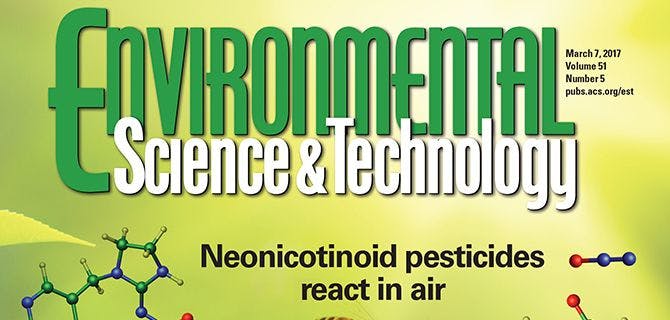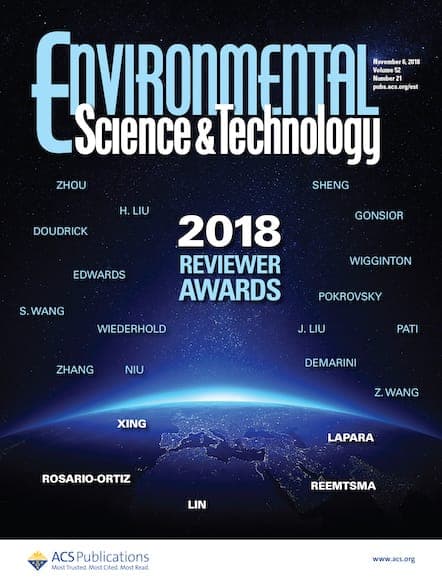The following editorial originally appeared in Environmental Science & Technology Letters. A little over three years ago, ACS Publications launched Environmental Science & Technology Letters (ES&T Letters) as a new environmental journal to enable rapid publication of research communications on environmental topics. While many journals publish both short communications and full papers together, Environmental Science […]

The following editorial originally appeared in Environmental Science & Technology Letters.
A little over three years ago, ACS Publications launched Environmental Science & Technology Letters (ES&T Letters) as a new environmental journal to enable rapid publication of research communications on environmental topics. While many journals publish both short communications and full papers together, Environmental Science & Technology (ES&T) had not had such a section since 1995 (called at that time, short correspondences). Over the past two decades, the information technology revolution has made it possible to quickly review, edit, and post research findings. The success and growth of rapid communications journals in other fields suggested that such a venue was needed in our field. Rather than just add a new section to ES&T, we created a new journal.
We think that that ES&T Letters has become a distinct and powerful forum for bold, new ideas. However, there are indications that some community members are confused about the differences between the types of papers that we publish in the journals. For example, about 25% of submissions to ES&T Letters substantially exceed the manuscript length requirements and thus are rejected after editorial review. We also suspect that some of ES&T’s authors have missed opportunities to publish Letters because they still do not appreciate the merits of the format. Researchers who have now published in ES&T Letters and many of its readers understand the differences between the two publication types, but others may not. We hope this joint editorial will demystify the relationship between the two journals.
The most obvious difference between papers published in the two journals is length. Letters in ES&T Letters are approximately half the length of Research Articles in ES&T. This does not simply mean that a Letter is written by moving half of the text and figures into the Supporting Information. Letters simply contain less information than Research Articles because fewer words are needed to tell the story. In contrast, Research Articles thoroughly articulate new ideas and their implications. By taking brevity seriously in the Letters format, we can convince busy experts to return reviews to us in approximately a week, thereby making it possible to post accepted manuscripts within a month of submission. Research Articles typically require approximately a month to review and another couple of months to revise, re-review, and publish because reviewers and editors need more time to evaluate the details. When reviewers indicate that a Letter meets our criteria for quality, novelty, and significance but requires the collection of additional data or further analysis prior to publication, we often decline it with a recommendation to submit a Research Article to ES&T after the additional work has been completed.
It is not just length that separates Research Articles from Letters. Although both formats are expected to meet our high standards, Letters also require urgency. In an era when all publications occur pretty rapidly, the question of urgency hinges on the manner in which the information will be used. According to the Oxford Dictionary, urgent matters “require immediate action or attention”. For researchers in an established field, an urgent finding may upend a long-held theory or could open up an entirely new area of inquiry. At its best, the ideas reported in a Letter will cause at least one research team somewhere in the world to reconsider their next set of experiments.
Urgency to researchers is not the only way to satisfy our criterion. Research on matters affecting public health and the environment is especially relevant to employees of government agencies, industries, and nongovernmental organizations as well as journalists because they are often in a position to do something about it. When a researcher discovers an unexpected source of pollution, rapid communication in a Letter not only assures that they will receive credit for the finding but also is often an ethical imperative. For example, recently published Letters on the presence of perfluoroalkyl substances (PFAS) in drinking water supplies and in food packaging were more valuable to ongoing efforts to minimize human exposure because the users of the information did not have to wait until additional data were collected to act on the findings.
There is also a relationship between urgency and novelty that can affect subsequent publications. In most cases, researchers continue to pursue research that they report in a Letter, but prospective authors may struggle to convince reviewers that the follow-up Research Article meets ES&T’s criterion for novelty if they have not substantially advanced the idea beyond the original content of the Letter. Conversely, prior publication of a Research Article can make it difficult for authors to achieve the urgency expected in a Letter. Prospective authors can avoid potential disappointment by anticipating their next steps and planning publications accordingly.
We believe that our sibling journals both serve vital roles in the community. ES&T is a comprehensive journal that publishes Research Articles and Policy Papers. It also serves as a means of sharing ideas through Viewpoints, Critical Reviews, Features, and, in the coming year, Perspectives. ES&T Letters publishes rapid communications of an urgent nature and occasional Short Reviews of emerging topics. During this start-up period, many of our authors did not initiate their research with an intention of publishing a Letter. Rather, they realized that an unexpected discovery lent itself to the Letter format. As a result, Letters account for <5% of our overall content. We expect this to change now that researchers understand Letters. Of course, this does not diminish the value of Research Articles. Researchers might find that despite a high degree of urgency, they still need the space afforded by a Research Article to tell the full story. Irrespective of the format, we welcome research that has significant implications for the protection of public health and the environment. Effective communication of our most important research is essential now, more than ever.
